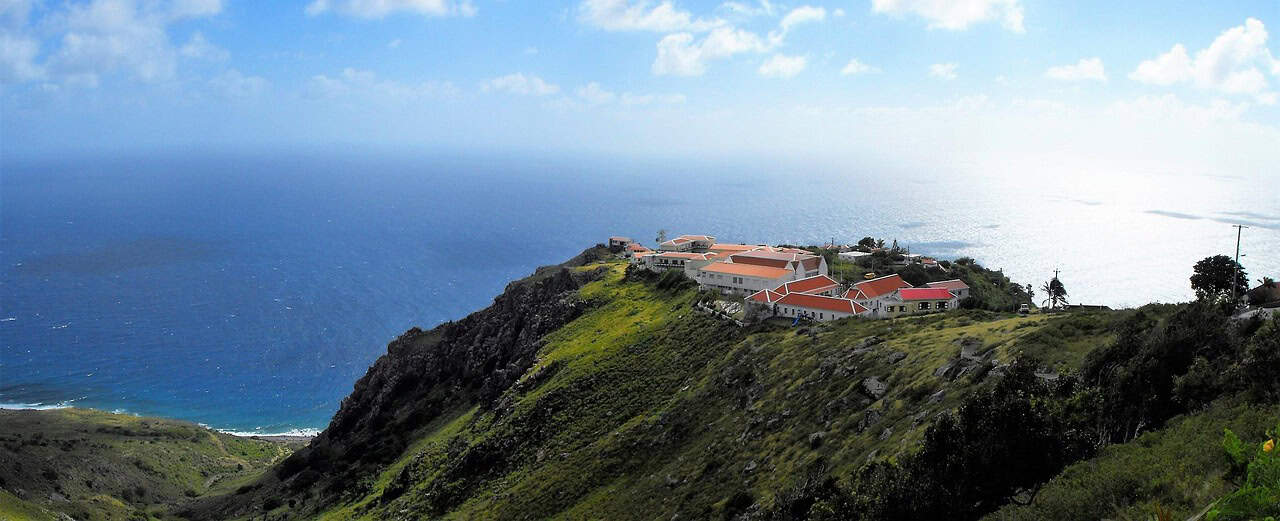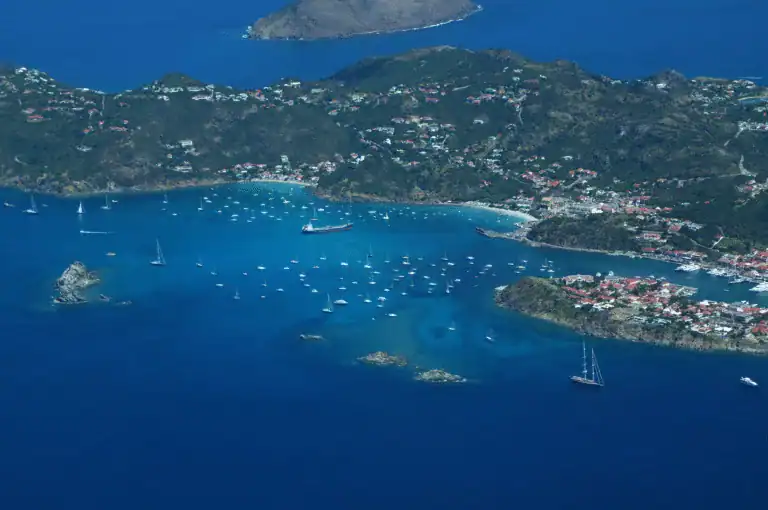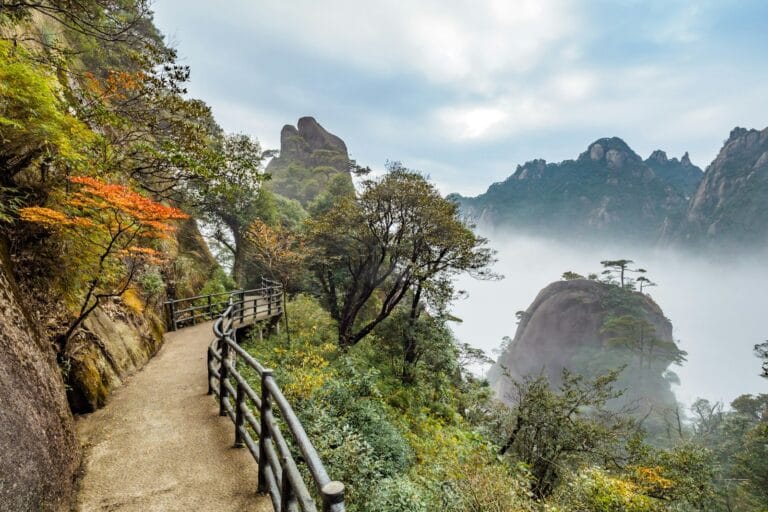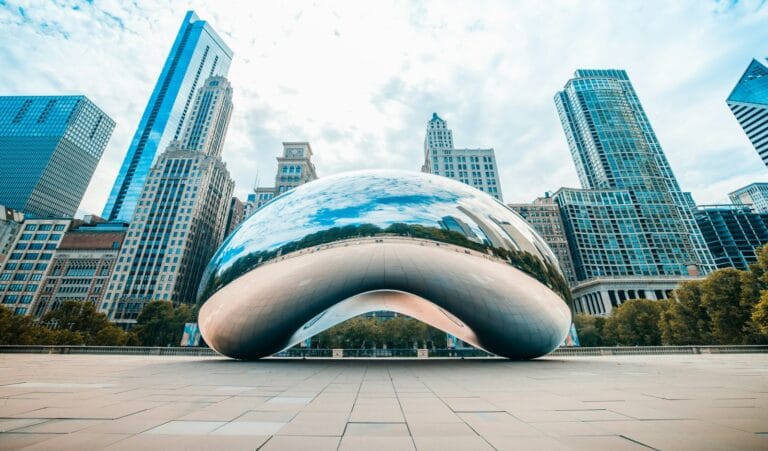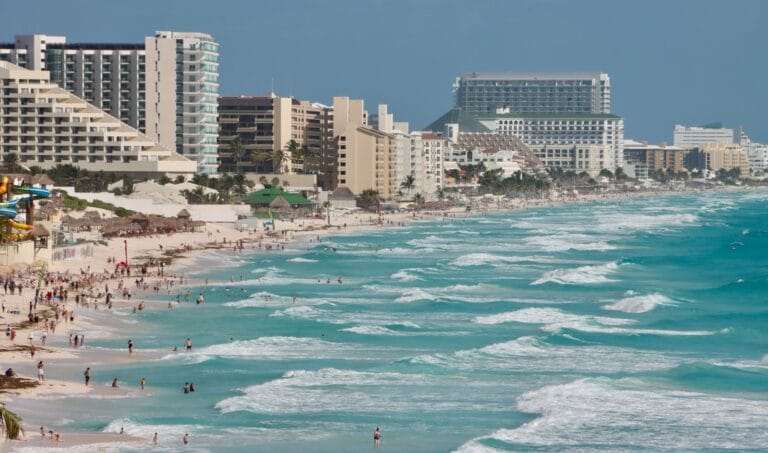Saba Travel Guide: Unspoiled Nature, Sky-High Trails & Dutch Caribbean Charm
Intro to Saba Travel Guide
Tucked in the Lesser Antilles, the five-square-mile island of Saba is a Dutch Caribbean treasure for hikers, divers, and serenity seekers. Often called “The Unspoiled Queen,” it rises steeply from the sea with cloud forests, volcanic peaks, and pristine reefs — offering raw beauty and warm hospitality far from cruise ship crowds.
Start planning with curated Saba tours and discover a Caribbean island that feels untouched, elevated, and entirely your own.
💡Quick Facts:
Country: Netherlands
Territory: Saba (Special Municipality of the Netherlands)
Area: 13 km² (5 mi²)
Population: ~1,900 (2024 est.)
Density: ~146 people/km²
Capital: The Bottom
Regions/Subregions: Windwardside, Zion’s Hill (Hell’s Gate), St. Johns, The Bottom
Language(s): Dutch (official), English (widely used)
Currency: U.S. Dollar (USD)
Time Zone: Atlantic Standard Time (UTC–4)
Airports: Juancho E. Yrausquin Airport (SAB)
Climate: Tropical marine; warm year-round; rainy season September–November
Known For: Steep volcanic landscapes, world-class diving, Mount Scenery, eco-tourism, Dutch-Caribbean culture
🛂Arrival Info:
Entry Requirements: Valid passport required; return/onward ticket
Visa-Free Countries: U.S., EU, UK, Canada, Caribbean Netherlands visa policy applies
Visa on Arrival: Not available
Maximum Tourist Stay: 90 days for most passport holders
Electronic Travel Authorization: Not required
Visa Portal
Customs Info
💉Health Info:
Vaccines Recommended: Routine (MMR, Tdap), Hepatitis A
Local Health Risks: Minimal; good air quality and low pollution
Hospitals: Saba Cares Medical Center (The Bottom)
English-Speaking Clinics: Yes
Terrain-Specific Concerns: Steep terrain; hiking-related injuries possible
Insurance: Recommended for medical evacuation or off-island care
Emergency Care: Basic care on island; serious cases referred to Sint Maarten
✅ Check travel insurance options for travel emergencies, delays, and medical needs abroad — Get coverage here
✅ Stay Informed with Official Updates: WHO – International Travel & Health | CDC – Travel health updates
🚨Travel Advisory:
Current Alerts: None
General Safety Level: Very safe; extremely low crime
Regional Restrictions: None
Local Risks: Slippery trails during rain; marine safety for divers
Civil Rights Concerns: None
City-Specific Alerts: Not applicable
✅ Stay Informed with Official Updates: US Travel Advisory | UK Foreign Travel Advice
📅Holidays:
Major Public Holidays (Dutch and Local):
– King’s Day – April 27
– Emancipation Day – July 1
– Saba Day – First Friday in December
– Christmas Day – December 25
– Boxing Day – December 26
Festivals & Events:
– Saba Carnival – Late July
– Saba Day – Cultural pride and national celebration
💰Visitor Info:
Currency: U.S. Dollar (USD)
Exchange Tips: No exchange needed for USD holders
Cards & Tipping: Credit cards accepted in hotels; 10–15% tipping customary
Duty-Free Limits: Standard Caribbean Netherlands rules
Cash-Only Areas: Some guesthouses and taxis prefer cash
Tourist Taxes: Lodging tax (~5%), environmental fee for divers
Daily Budget Range:
– Budget: $80–$120
– Midrange: $150–$250
– Luxury: $300+
✈️Airports:
Main Airport: Juancho E. Yrausquin Airport (SAB)
Airlines: Winair from Sint Maarten
International Access: Connect via Princess Juliana Airport (SXM)
Classification: Regional; STOL-only (shortest commercial runway in the world)
Transport to/from Airport: Taxis, local drivers
Distance to Capital: ~3 km from The Bottom
Runway Limitations: 400m runway; only small aircraft
✅ Delayed or canceled flight? Check if you’re eligible for compensation
🚍Transport:
Local Transit:
– No public buses; walking, taxis, and rental cars available
Driving Laws: Right side; Dutch license or foreign equivalent accepted
Rental Availability: Limited; reserve in advance
Common Scams: None reported; locals known for honesty
Ferries: The Edge and Dawn II ferries to/from Sint Maarten
✅ Book reliable airport transfers and in-city rides in advance. Reserve your ride here
📶Connectivity:
SIM & eSIM Access: Digicel and Flow via regional networks
Best Traveler SIMs: Roaming from Sint Maarten works; local SIMs limited
Coverage Quality: Strong coverage island-wide
Public Wi-Fi: Available in hotels and some cafés
Roaming: Roams on Caribbean Netherlands network; confirm with provider
✅ Stay connected abroad with affordable eSIM data packs. Get your eSIM here
📜Laws & Etiquette:
Drinking Age: 18
Alcohol Rules: Legal in public; no restrictions on sales hours
Smoking Rules: Banned in public buildings
LGBTQ+ Laws: Protected under Dutch law
Cultural Taboos: Respectful dress and behavior encouraged
Behavior Norms: Small-island hospitality; formal greetings appreciated
Photography: Permitted; ask for consent in villages
🛡️Emergency Info:
Emergency Numbers:
– Police: 911
– Fire: 912
– Ambulance: 913
Tourist Assistance: Tourist Bureau in Windwardside
Nearest Embassy: Dutch embassy in Philipsburg, Sint Maarten
Medical Emergency: Saba Health Care Foundation; medevac to Sint Maarten
Volcano Monitoring: N/A — Mount Scenery is dormant
✅ Use embassy locator tools: Embassies Worldwide
🌦️Weather:
Best Time to Visit: December to May (dry season)
Rainy Season: September to November
Avg Temperatures: 24–28°C (75–82°F)
Rainfall Patterns: Short showers, mostly at night
Severe Weather Risks: Tropical storms and hurricanes (June–Nov)
Microclimates: Rainfall increases at higher elevations on Mount Scenery
✅ Stay prepared—check the weather forecast for your destination — Weather Forecast
Saba Cities and Major Destinations
Despite its tiny size, Saba has four distinct villages connected by a single winding road — “The Road That Couldn’t Be Built.”
The Bottom – Saba’s capital and government center, located in a scenic inland basin. Home to the island’s university, public services, and key festivals. It’s a peaceful base with lush views and a growing art scene.
Windwardside – The island’s tourism hub, perched on a slope with views of Mount Scenery. It offers guesthouses, dive shops, bakeries, and trailheads. The village is charmingly Dutch in look but Caribbean in vibe.
Hell’s Gate (Zion’s Hill) – Saba’s northern gateway near the airport, with artisan shops and access to coastal viewpoints like Flat Point and Crispin Trail.
St. John’s – A residential area between The Bottom and Windwardside. It has local schools and a more tranquil, lived-in feel for travelers wanting a slower pace.
How to Choose Where to Go in Saba
Saba is easy to explore in a few days, but your base can shape the experience:
- For hiking and nature lovers – Stay in Windwardside for proximity to Mount Scenery and rainforest trails.
- For local life – Choose The Bottom to experience day-to-day community rhythms and festivals.
- For airport convenience – Hell’s Gate offers quick access to Saba’s famously short runway and sea views.
- For quiet stays – St. John’s has guesthouses with incredible vistas and peaceful surroundings.
All four villages are connected by taxi or rental car, with scenic switchbacks and panoramic pullouts along the way.
Natural Escapes and Scenic Highlights
Nature is Saba’s crown jewel. From cloud forests to coral walls, its landscapes are pristine and photogenic.
Mount Scenery – The highest point in the Kingdom of the Netherlands (887 m / 2,910 ft). Hike the Mount Scenery Trail to enter a misty elfin forest at the summit. Birds, orchids, and tree ferns abound.
Tide Pools at Flat Point – Hidden basalt pools near the airport cliffs, reachable by trail. Swim with caution; best visited in calm seas.
Ladder Bay & The Ladder Trail – This historic stone staircase once linked the sea to The Bottom. It’s now a steep but epic hiking route with sweeping sea views.
Crispin Trail – An underrated path with excellent flora, forest transitions, and chances to spot the red-billed tropicbird.
Troy Hill & Maskehorne Hill – Coastal trails with ocean panoramas, leading to some of the best sunrise and sunset viewpoints.
Saba Marine Park – Encompassing the entire coastline, this protected zone is a diver’s paradise with coral pinnacles, lava tunnels, and reef drop-offs.
Cultural and Historic Landmarks
Saba’s cultural pride comes from its seafaring past, Dutch governance, and artisan traditions.
Harry L. Johnson Museum – Housed in an 1840s sea captain’s cottage, this small museum in Windwardside explores colonial history, shipbuilding, and daily life in old Saba.
Dutch Reformed Church (The Bottom) – A quiet but stately church with ocean views and a colonial-era cemetery. Reflects the island’s Protestant heritage.
St. Paul’s Conversion Church (Windwardside) – Catholic landmark with stained glass and a large bell tower.
Artisan Lace Shops – Saba lace, a needlecraft introduced in the 1870s, is still practiced by locals and sold in shops across the island.
Saba University School of Medicine – A hub of international energy in The Bottom, contributing to the island’s global connection.
Local Food, Arts, and Regional Experiences
Small island, big flavor. Saba’s food scene celebrates freshness, heritage, and global fusion.
Try These Local Dishes – Goat stew, conch chowder, lobster curry, and Johnny cakes. Many restaurants use garden-grown herbs and locally caught seafood.
Popular Spots
- Brigadoon (Windwardside) – Upscale but rustic, great for Caribbean-fusion
- Chez Bubba Bistro – French-Caribbean excellence with fine wine
- Saba Snack (The Bottom) – Quick bites with big views
Local Arts & Crafts – Find handcrafted Saba lace, pottery, and driftwood sculptures in village shops and galleries.
Events
- Saba Carnival (July–August) – Music, parades, and island spirit
- Saba Day (First Friday of December) – Patriotic celebration with dancing, speeches, and boat races
- Sea & Learn Month (October) – Science-meets-nature workshops for eco-minded travelers
Must-See Experiences in Saba
These signature activities define the things to do in Saba:
- Hike to Mount Scenery’s cloud forest summit
- Scuba dive the Pinnacles or Third Encounter reef wall
- Explore the Ladder Trail for a vertical challenge with sea views
- Swim or photograph the Flat Point tide pools
- Visit local lace shops in Windwardside for handmade souvenirs
- Dine cliffside at sunset overlooking the sea
- Join Sea & Learn workshops for marine life insights and conservation talks
Book immersive Saba tours and experience unforgettable things to do in Saba — from mountaintop hikes and underwater volcanoes to heritage lacework and marine science expeditions.
Getting Around Saba
With one road and no traffic lights, travel is as simple as it gets — but expect steep grades and curves.
- Taxis – Fixed fares connect the airport, harbor, and villages. Shared taxis are possible during ferry arrivals.
- Car Rentals – Recommended if you want flexibility for hiking or photography stops. Small 4WDs or compact sedans are best.
- Walking – Many visitors hike between towns, especially Windwardside to The Bottom. Trails are scenic but steep — bring sturdy shoes.
- Flights – Winair operates short STOL flights from St. Maarten to Saba’s Juancho E. Yrausquin Airport — with the world’s shortest commercial runway.
- Ferries – Several weekly ferries from St. Maarten connect via Fort Bay.
Best Time to Visit Saba
The best time to visit Saba depends on weather, diving conditions, and festival timing.
- December to April (dry season) – Clear skies, prime diving visibility, and ideal hiking weather. Peak travel season.
- May to August – Warmer and quieter; Carnival is held in late July or early August.
- September to November – Rainier, with fewer visitors. October’s Sea & Learn month is perfect for educational eco-travel.
Avoid late September if hurricane forecasts are active, though Saba is well-prepared and recovers quickly.
Best Travel Itineraries in Saba
3-Day Explorer
Day 1: Arrive + Windwardside stroll + local dinner
Day 2: Hike Mount Scenery + visit museum + crafts shopping
Day 3: Tide pool walk + ferry or flight out
5-Day Hiker & Diver Combo
Day 1: Arrival + Ladder Trail
Day 2: Dive Saba Marine Park + lunch in The Bottom
Day 3: Hike Maskehorne Hill + artisan visits
Day 4: Second dive day + sunset dinner
Day 5: Mount Scenery summit + departure
7-Day Slow Travel Escape
Mix hiking, village life, daily dives, and handmade shopping with time to breathe, write, or photograph.
Travel Safety and Cultural Etiquette in Saba
- Health & Safety – Saba is extremely safe, clean, and welcoming. No large crowds or crime issues.
- Hiking Tips – Trails can be slippery; always wear proper shoes.
- Etiquette – Say hello, respect quiet residential zones, and support small businesses.
- Connectivity – Wi-Fi is available but limited in remote areas. Download maps before hiking.
- Marine Safety – Dive only with licensed operators. Reef zones are protected.
Nearby Islands to Explore
Saba is easily combined with nearby Dutch and French Caribbean gems:
- St. Maarten – Just 12 minutes away by air or 90 minutes by ferry. Offers big-city Caribbean contrast, nightlife, and shopping.
- St. Eustatius (Statia) – Close neighbor with volcano hiking and colonial forts. Quiet, undeveloped, and perfect for twin-island nature travel.
- St. Barthélemy – Chic, French, and luxurious — a contrast in tone but reachable by ferry from St. Maarten.
- Anguilla – Beach lovers’ dream with world-class sands and day trip potential via St. Maarten.
St. Maarten Travel Guide | St. Eustatius Travel Guide | St. Barthélemy Travel Guide | Anguilla Travel Guide
Final Planning Checklist for Saba
- Book Winair flights early due to limited seats
- Reserve dive tours and ferry tickets in advance
- Bring reef-safe sunscreen and hiking shoes
- Prepare for steep walks — even village strolls are hilly
- Stay hydrated during hikes; water bottles are a must
- Carry some cash; ATMs exist but aren’t widespread
- Check ferry schedules from St. Maarten (they vary seasonally)
- Buy authentic Saba lace or artisan pottery before you go
Craving a quieter, greener, higher Caribbean experience? Dive into more travel ideas, Saba tours, and handpicked things to do — and let the Unspoiled Queen of the Dutch Caribbean surprise you at every turn.

